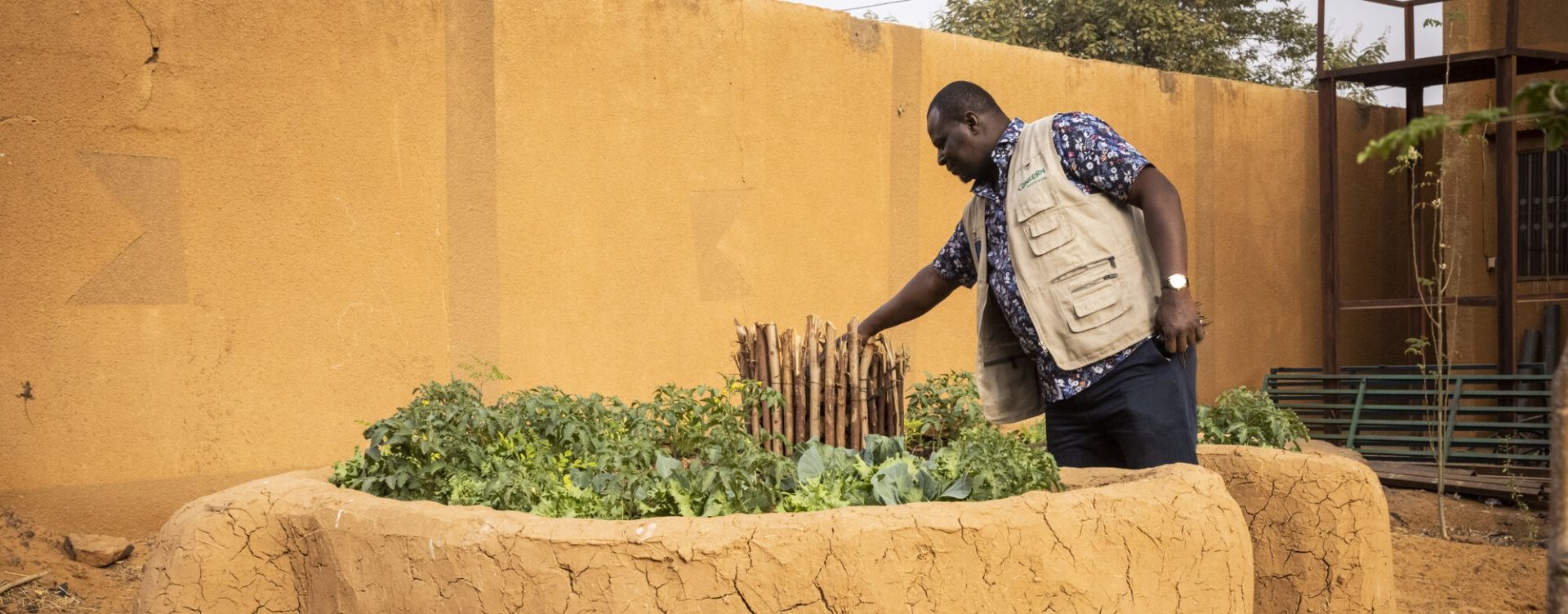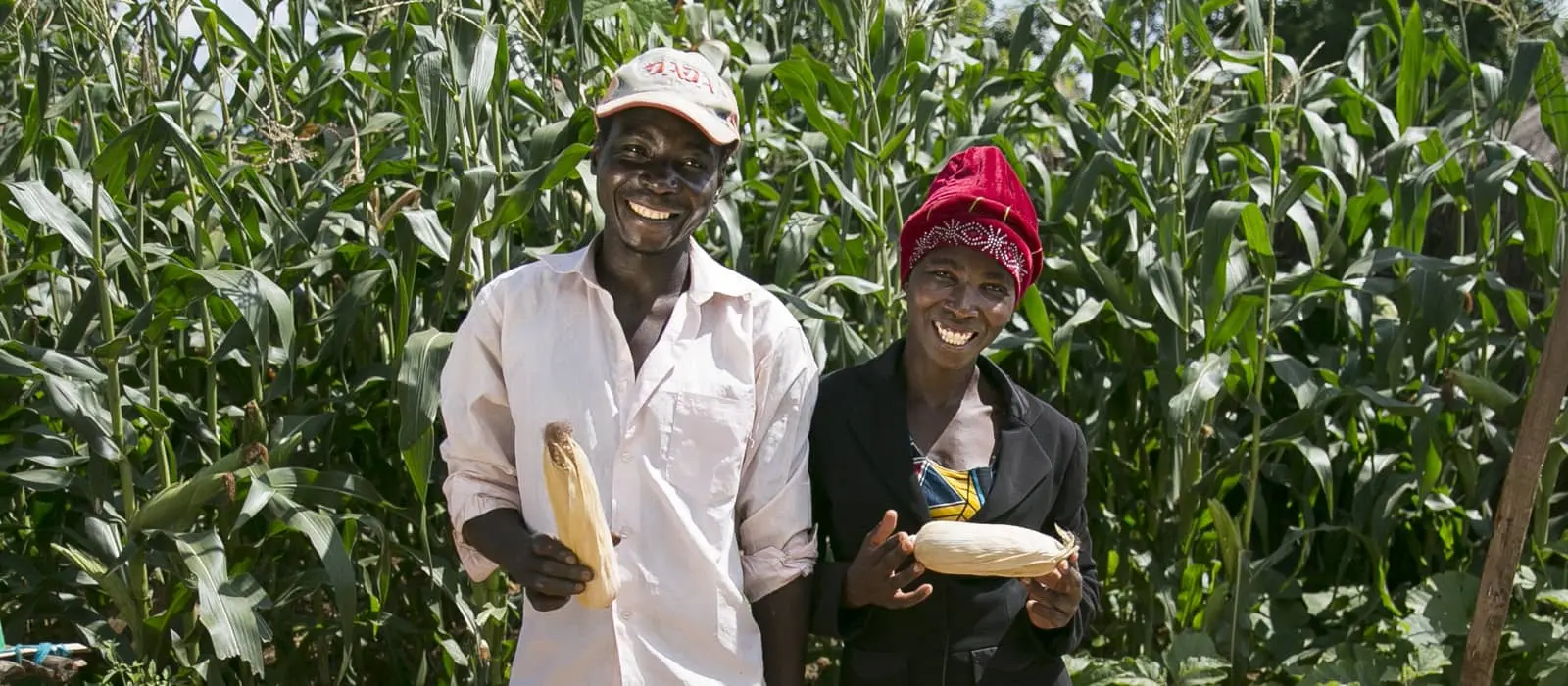Can an oddly-shaped garden help in the fight against malnutrition, even in the toughest conditions?
Agriculture is a key ingredient to fighting hunger. While some of the work in this area happens at large scales, transforming farms and regions, there are as many innovations that happen in the backyards of the families we serve.
Keyhole gardens are one of those innovations that are simple, effective, and save lives by providing enough food and nutrients for hundreds of thousands of people that Concern has worked with over the years. Learn a bit more about how they work in the communities we serve — and how to build one of your own at home.
What is a keyhole garden?
Named for its shape, a keyhole garden is a round, raised garden surrounded by a retaining wall. It’s supported with stones and/or bricks, with a section cut out in the middle to provide access to a composting basket.
The garden is watered through the basket. The water and nutrients from the compost flow over the rocks into the garden’s soil. The retaining wall keeps in moisture, while the bottom layer of rocks and debris drains the excess water.
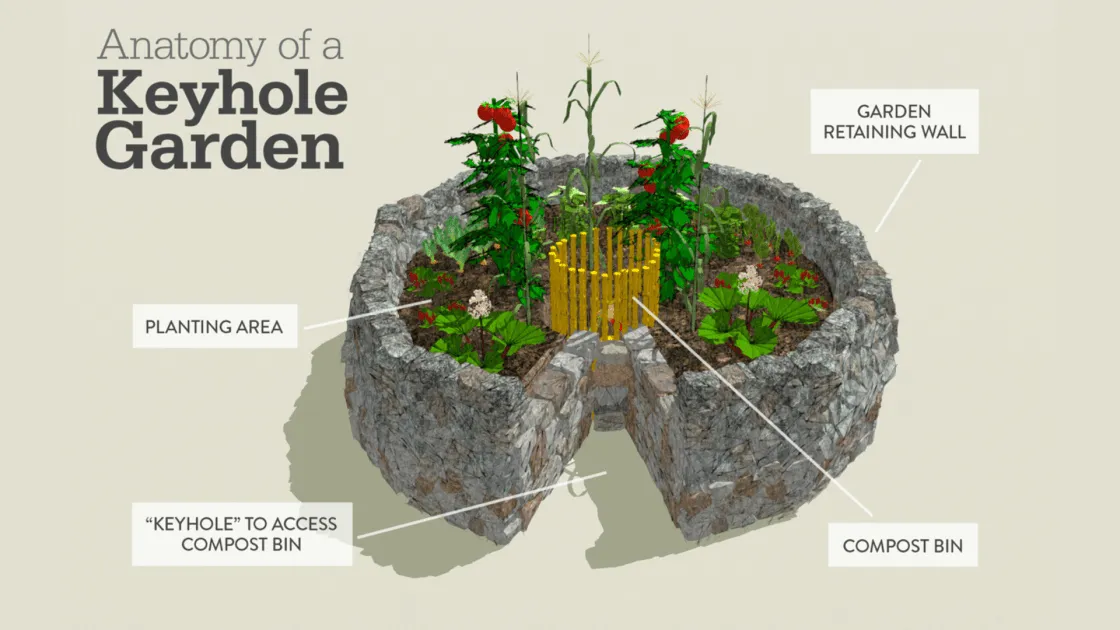
Do keyhole gardens work?
Yes! One of the reasons keyhole gardens are so effective in our work at Concern is that they can be made exclusively from low-cost, locally-available materials. They also require less labor and water than regular vegetable gardens.
Families can use everyday kitchen and garden waste to nourish their keyhole gardens, eliminating the need for costly fertilizers and pesticides. The keyhole structure ensures soil fertility for five to seven years and they can support the production of at least five varieties of vegetables at a time, providing dietary diversity at a lower cost.
A sustainable solution to climate challenges
One of the other main advantages to keyhole gardens is how adaptable they are to different climates and settings. Unlike normal gardens, they can be built in rocky areas, and on shallow or arid land. The nutrients and water in the compost increases the garden’s resistance to drought, enabling them to produce food year-round.
Benefits for the long-term
Over the last several years, Concern has worked with families to build tens of thousands of keyhole gardens across many of the countries where we work. The returns are consistent: Many families have been able to harvest vegetables from their keyhole gardens at least three times over a three-month period, adding a variety of nutritious foods to the dinner table including tomatoes, onions, carrots, eggplants, black-eyed peas, and local greens.
What’s more, the surplus from these harvests can either be dried and stored for future use, or sold at nearby markets. For many families, building a keyhole garden was their first experience with having fast-yielding vegetables available for their children during both wet and dry seasons.
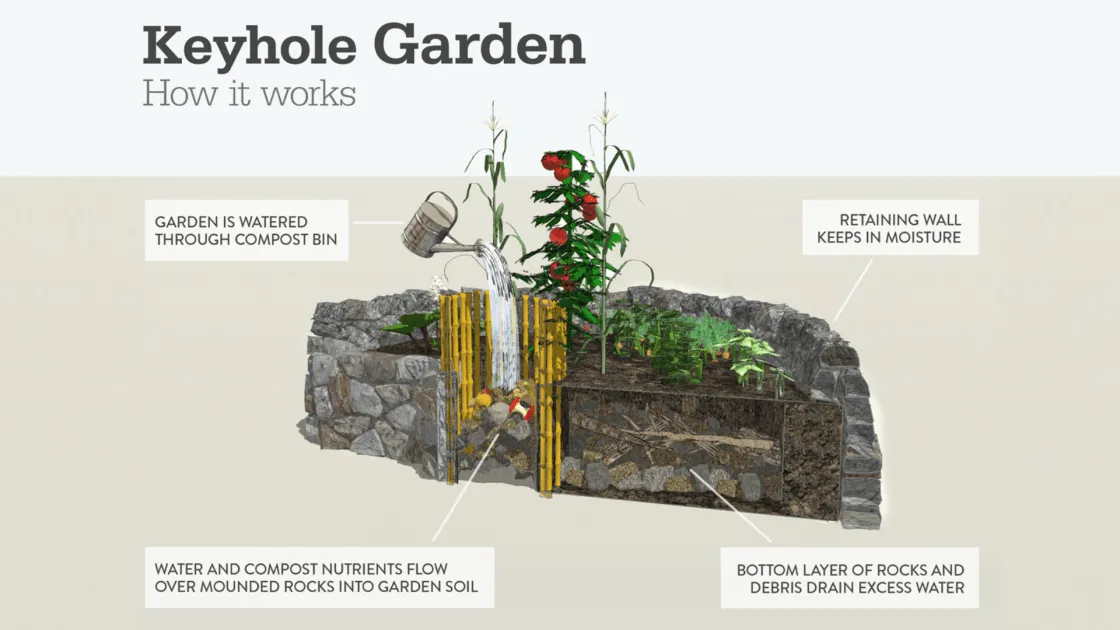
How to build your own keyhole garden
Like kitchen gardens, keyhole gardens can also be a way of making the most out of a small amount of yard space while adding more sustainability to your diet. We’ve adapted these instructions from the Baker Institute to make building your own keyhole garden an easy weekend project:
1. Set up the space
Clear a six-and-a-half–foot circle in the ground. Place four corner posts in the center, approximately one-and-a-half feet apart. Make an outline of the garden with stones, cutting in at the center to create the keyhole shape.
2. Build the compost basket
This isn’t exactly a basket, but follows the same principle. Use the four corner posts to make your compost basket, and form a circle around these posts. Chicken wire, thatch, or a bamboo privacy screen are all good materials to use for this. Marking the area with your material, and dig out the inner circle to about 18 inches. Prop up the material into a cylindrical shape, and fill the interior with rocks and organic material. This sets up the drainage and initial nutrients for the rest of your garden and allows water that is poured into the “basket” to flow into the garden soil.
3. Prepare the first layer of the keyhole garden
Line the first layer of your garden with materials that will provide minerals to the soil and drain heavy rains. These can include: iron scraps (such as empty food and beverage cans), aloe leaves, and dry animal bones. Cover this layer with soil, thatching grass, and wood ash.
4. Prepare the second layer
Add soil on top of the wood ash, followed by a thick layer of mixed soil and dry manure. Make sure that each layer slopes downwards from the basket, so that water can flow from the basket throughout the garden.
5. Build the garden walls
Add stones to the initial outline so that they go just above the layers of soil to protect the inner garden.
6. Plant your seeds
Plant your seeds according to the season and instructions on the seed packets. Most experts recommend keeping a foot-and-a-half’s distance from your first row of plants and the compost basket to prevent too many nutrients reaching the innermost rows.
To conserve space and soil nutrients, it is recommended to plant at least four types of vegetables in your keyhole garden, alternating between root and leafy vegetables. Onions and garlic are good pest-resistant crops; carrots, radishes, and turnips are also recommended for root vegetable options. For leafy vegetables, spinach, Swiss chard, kale, and herbs are all good bets.
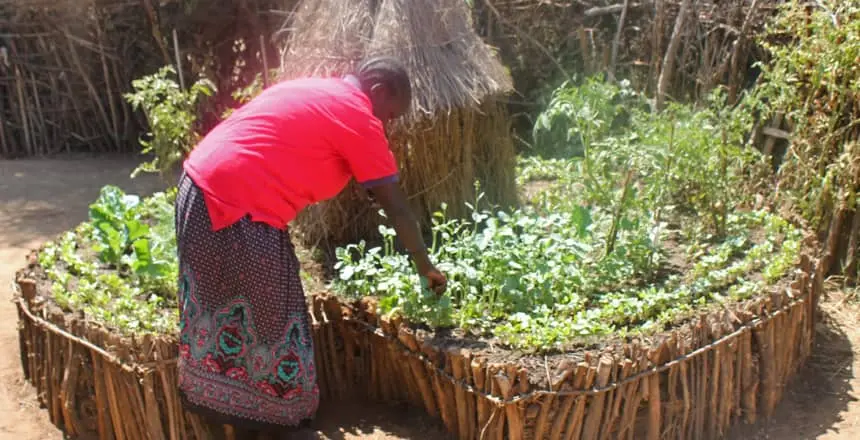
Maintaining your keyhole garden
The two main components of maintaining a keyhole garden are water and compost.
1. Watering your keyhole garden
Water your garden in the center through the compost basket. You can additionally “touch up” the water on the top soil if it gets too dry, but the main watering source will be this central “well.”
2. Composting
Maintain the compost in the middle of your garden regularly. Uncooked fruit and vegetable scraps, eggshells, coffee grounds, grass clippings, bread, dry oats and grains, leaves, and twigs are all good materials to use. Avoid composting cooked fruit and veg, anything containing oil or fat, meat, pet waste, or any plants infected with pests. Your composting basket will decompose within one to two years and will need to be replaced.
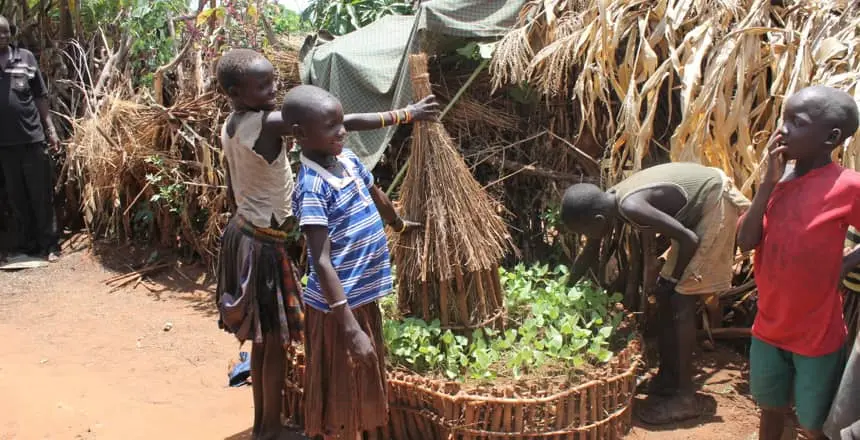
Planting the seeds for gender equality
One of the unexpected benefits of keyhole gardens in the communities where Concern works is how they’ve fostered a greater sense of gender equality with the families who have adopted this innovative farming style.
When Concern first introduced keyhole gardens, they were considered women’s work — as is much of the home gardening practices in these societies (rooted in patriarchal gender norms). However, men also soon realized that they could gain from these systems, and took an active role in assisting their wives. They began to dig soil, cut sticks, collect stones, fetch water, and buy seeds, helping Concern to build over 10,000 gardens in our first year of the program alone.


